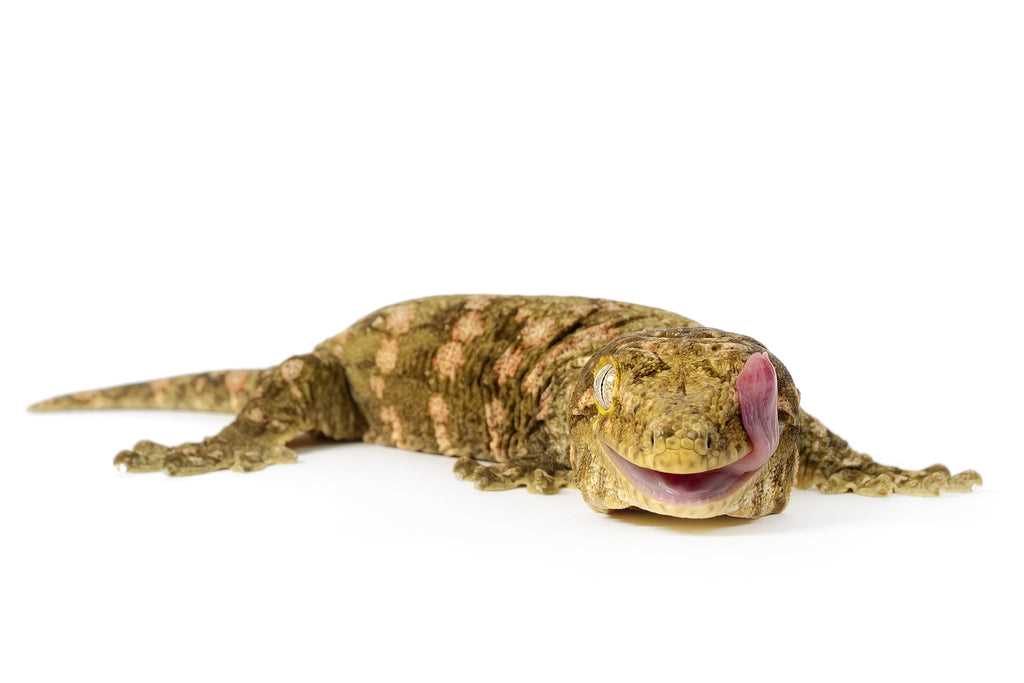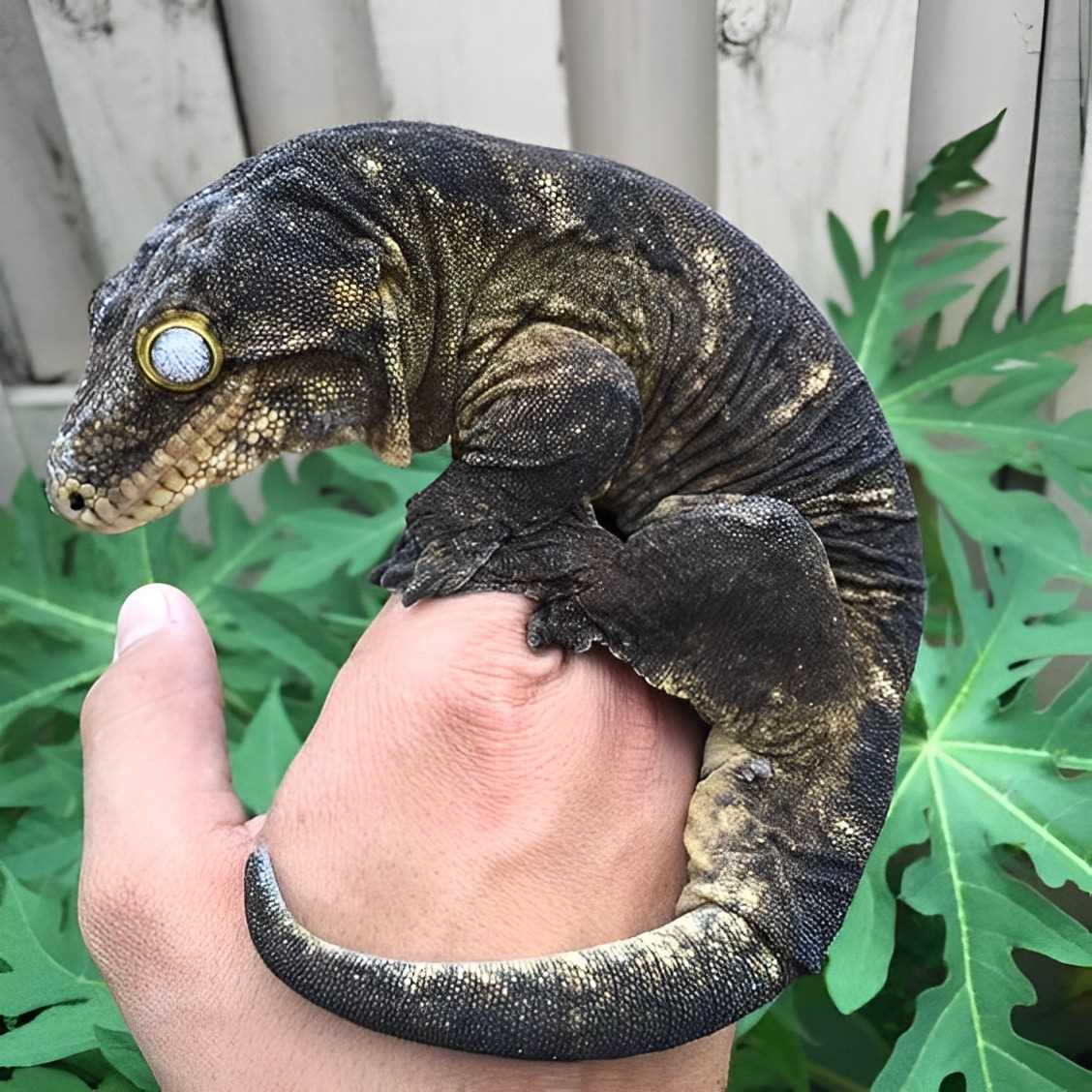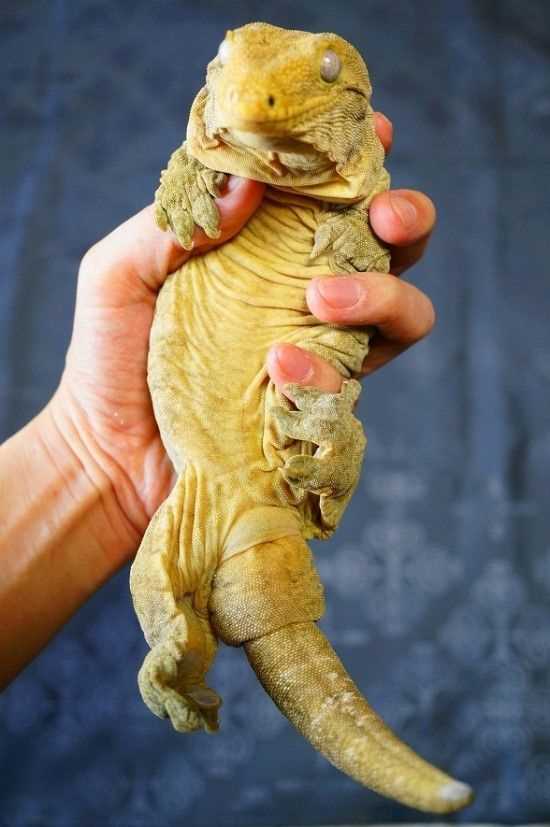
One of the most striking features of leachie geckos is their appearance. These geckos have thick, rough skins with bumpy texture and jagged scales, giving them a prehistoric and rugged look. Their colors range from various shades of brown to vibrant greens and sometimes even marbled patterns. Its large round eyes and unmistakable toe pads make it a true marvel of nature.
Leachie geckos are primarily found in the rainforests of New Caledonia, where they spend most of their time climbing trees and hiding amongst foliage. Like most geckos, leachies are nocturnal creatures, meaning they are most active during the night. They have unique behaviors such as vocalization, and their calls can range from soft squeaks to loud barks. These vocalizations are thought to be a way of communication between geckos, signaling everything from territorial warnings to finding a mate.
Caring for a leachie gecko requires some specific considerations. They need a spacious enclosure with lots of climbing opportunities and hiding spots to mimic their natural habitat. The enclosure should also have a temperature gradient, with a warm basking spot and a cooler area for proper thermoregulation. A nutritious diet consisting of gut-loaded insects and occasional fruits is essential for their health and well-being. Regular misting is necessary to maintain a humid environment, as leachie geckos thrive in high humidity levels.
Essential Care for Leachie Geckos
Temperature and humidity also play a significant role in the health and well-being of leachie geckos. The ideal temperature range should be between 74-82°F (23-28°C), with a slight drop in temperature during the night. Maintaining the humidity at around 60-70% is essential, as it helps to prevent skin shedding problems.
Diet is another important aspect of leachie gecko care. These lizards are omnivores and require a varied diet consisting of insects, fruits, and even a small amount of baby food or reptile supplement. It is crucial to provide a balanced diet to ensure that they receive all the necessary nutrients for proper growth and development.
Nocturnal Habits
Like many geckos, the Leachie Gecko is primarily nocturnal. This means that they are most active during the night and prefer to spend their days hiding in dark, secluded places. This behavior is a natural adaptation to their environment, as it offers them protection from potential predators.
During the night, the Leachie Gecko will come out to hunt for food. Their diet mainly consists of insects, fruits, and nectar. This gecko has a unique ability to vocalize, and males will often use vocalizations to establish territory and court females.
Unique Skin and Adaptations

One of the most fascinating aspects of the Leachie Gecko is its skin. Their skin can come in a variety of colors and patterns, including shades of green, orange, brown, and even blue. This serves as camouflage, allowing them to blend into their natural habitat.
Additionally, their large eyes, unique toe pads, and specialized feet allow the Leachie Gecko to climb vertical surfaces and even walk on ceilings. This adaptation is essential for navigating their forested habitat, where they often dwell in trees and prefer higher elevations.
Tips for Creating the Perfect Habitat
Creating a suitable habitat is crucial for the well-being of leachie geckos. These rare and endangered reptiles are native to the island of Madagascar and require specific conditions to thrive.
1. Temperature and Humidity
Leachie geckos are ectothermic, which means they rely on their environment to regulate their body temperature. Maintain a temperature range of 75-85°F (24-29°C) during the day and a slight drop to 70-75°F (21-24°C) at night. Use a thermostat to ensure consistent temperatures.
Additionally, these geckos require high humidity levels of around 70-80%. To achieve this, provide a large water dish and mist the enclosure daily. The use of a hygrometer will help monitor and maintain proper humidity levels.
2. Enclosure Size and Setup
Leachie geckos are arboreal, meaning they spend most of their time in trees. Therefore, it is essential to provide a tall enclosure with plenty of branches and climbing surfaces. A minimum enclosure size of 36″ x 18″ x 24″ (91cm x 46cm x 61cm) is recommended for a single adult gecko.
Line the enclosure with a substrate that retains moisture well, such as coconut coir or cypress mulch. This will help maintain humidity levels and provide a naturalistic environment for the gecko.
3. Lighting and Nocturnal Behavior
Leachie geckos are nocturnal, meaning they are most active during the night. Therefore, they do not require UVB lighting but will benefit from a low-wattage incandescent bulb to provide a gentle ambient light and simulate the natural day-night cycle.
Ensure the enclosure has plenty of hiding spots, such as cork bark or artificial plants, to provide a sense of security for the gecko during the day.
4. Diet and Feeding
Leachie geckos are omnivores and feed on a variety of invertebrates, fruits, and nectar in the wild. In captivity, their diet should consist of gut-loaded insects, such as crickets and roaches, as well as a variety of fruits, including mashed bananas and papayas.
Provide a shallow dish of calcium and vitamin D3 powder to supplement their diet and ensure they receive the necessary nutrients for proper growth and development.
By following these tips, you can create the perfect habitat for your leachie gecko, allowing them to thrive in captivity.
Frequently Asked Questions about Leachie Geckos
If you’re curious about leachie geckos, you’re not alone! Here are some frequently asked questions about these fascinating creatures:
1. What is a leachie gecko?
2. Are leachie geckos endangered?
Yes, leachie geckos are considered endangered in the wild. Due to habitat loss and the introduction of invasive species to their native islands, their population has declined significantly. They are now primarily found in captivity, where efforts are being made to breed and conserve this species.
3. What do leachie geckos eat?
Leachie geckos are omnivorous, meaning they eat both plant matter and small animals. In the wild, their diet consists of fruits, nectar, insects, and even smaller lizards. In captivity, they can be fed a variety of foods such as gut-loaded insects, commercial gecko diets, and fresh fruits.
4. Are leachie geckos nocturnal?

Yes, leachie geckos are primarily nocturnal, meaning they are most active during the night. They have adapted to a nocturnal lifestyle, with large eyes and specialized skin that helps them navigate and hunt in low light conditions.
5. How long do leachie geckos live?
Leachie geckos have a relatively long lifespan compared to other gecko species. In captivity, they can live between 15 to 20 years, with some individuals reaching even older ages. Proper care, diet, and habitat conditions are crucial for their longevity.

I’m Lena Adams—a product of an unconventional upbringing in the African wilderness. My father, a daring explorer of African wildlife, sparked my fascination with reptiles, a passion that intertwined with the tragic loss of my mother during an expedition, leaving an indelible mark on my life. Driven to understand the creatures that captivated my parents, I embarked on my journey, sharing insights about reptiles, frogs, and lizards on my website. Through my explorations and conservation efforts, I honour my family’s legacy while seeking connections—to the creatures, nature, and the mother whose presence I yearn to understand.
